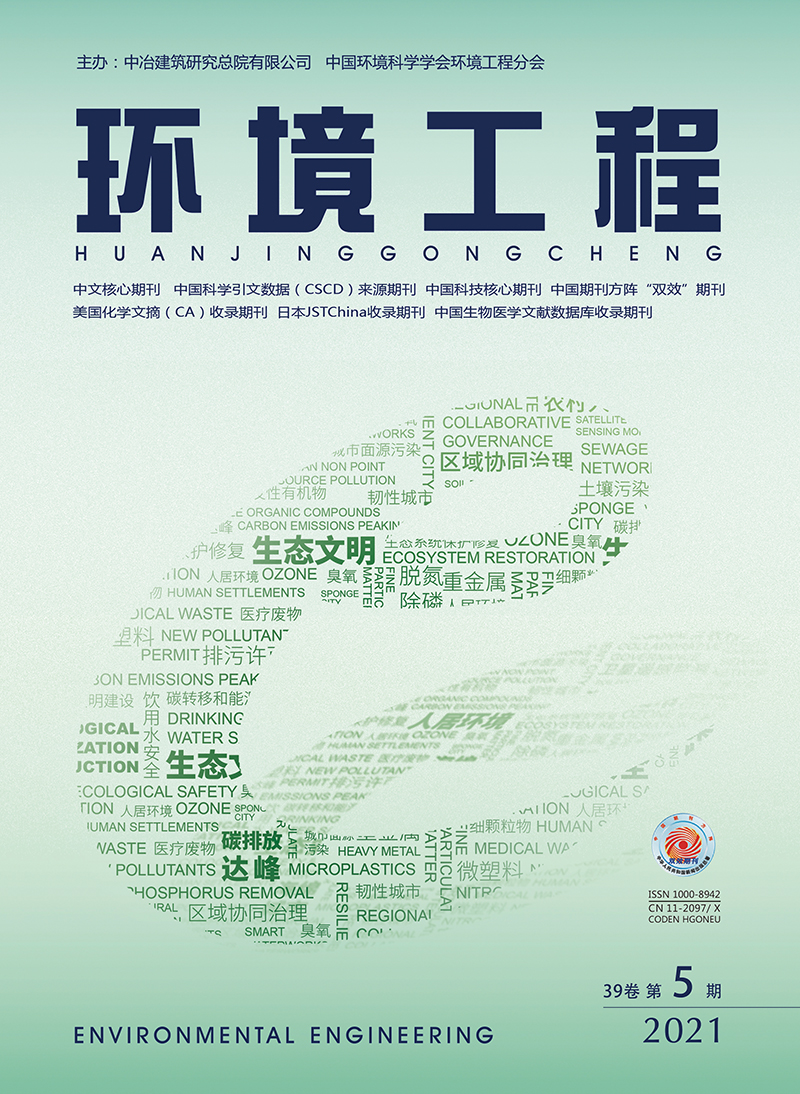| [1] |
朱彤,尚静,赵德峰. 大气复合污染及灰霾形成中非均相化学过程的作用[J]. 中国科学:化学, 2010,40(12):1731-1740.
|
| [2] |
李源,陈魁,孔君,等. 天津市PM2.5污染特征与来源解析[J]. 环境工程, 2019,37(11):132-137.
|
| [3] |
苗青青,姜楠,张瑞芹,等. 中原城市群典型城市秋冬季大气PM2.5污染特征及溯源[J/OL]. 环境科学,[2020-08-17]. https://doi.org/10.13227/j.hjkx.202005333.
|
| [4] |
王涛,王明悦,胡薇,等. 中国2018年PM2.5的空间分布特征:基于地理信息系统的研究[J]. 环境与职业医学, 2020,37(6):553-557.
|
| [5] |
韩婧,李元征,李锋. 2000-2015年中国PM2.5浓度时空分布特征及其城乡差异[J]. 生态学报, 2019,39(8):2954-2962.
|
| [6] |
CHEN L,GUO B,HUANG J S,et al. Assessing air-quality in Beijing-Tianjin-Hebei region:the method and mixed tales of PM2.5 and O3[J]. Atmospheric Environment, 2018,193(18):290-301.
|
| [7] |
王飞,韩业林,赵颖. 太原市大气颗粒物PM10和PM2.5多时间尺度变化规律研究[J]. 生态环境学报, 2017,26(9):1521-1528.
|
| [8] |
王振波,梁龙武,王旭静. 中国城市群地区PM2.5时空演变格局及其影响因素[J]. 地理学报, 2019,74(12):2614-2630.
|
| [9] |
王占山,李云婷,陈添,等. 2013年北京市PM2.5的时空分布[J]. 地理学报, 2015,70(1):110-120.
|
| [10] |
张亮林,潘竟虎. 中国PM2.5人口暴露风险时空格局[J]. 中国环境科学, 2020,40(1):1-12.
|
| [11] |
王勇,刘备,刘严萍. 基于小波变换的北京、上海等城市PM2.5浓度时空演化特征分析[J]. 灾害学, 2017,32(2):39-42.
|
| [12] |
唐玉翔,黄平,钱新明,等. 西安市PM2.5污染的时空分布[J]. 安全与环境学报, 2015,15(4):368-373.
|
| [13] |
姚青,蔡子颖,刘敬乐,等. 气象条件对2009-2018年天津地区PM2.5质量浓度的影响[J]. 环境科学学报, 2020,40(1):65-75.
|
| [14] |
陈莎,刘影影,李素梅,等. 京津冀典型城市PM2.5污染的健康风险及经济损失研究[J]. 安全与环境学报, 2020,20(3):1146-1153.
|
| [15] |
冯炎鹏,张军科,黄小娟,等. 成都夏冬季PM2.5中水溶性无机离子污染特征[J]. 环境科学, 2020,41(7):3012-3020.
|
| [16] |
黄小刚,邵天杰,赵景波,等. 长江经济带空气质量时空分布特征及影响因素的季节差异[J/OL]. 中国环境科学,[2020-08-17]. https://doi.org/10.19674/j.cnki.issn1000-6923.20191016.001.
|
| [17] |
易文利,朱婵园,郭婵,等. 陕西省冬春季PM2.5时空分布特征研究[J/OL]. 地球与环境,[2020-8-17]. https://doi.org/10.14050/j.cnki.1672-9250.2020.48.073.
|
| [18] |
依再提古丽·外力,王明力,杨建军,等. 2015-2018年乌鲁木齐市PM2.5及PM10
时空分布特征[J/OL]. 环境科学研究,[2020-8-17]. https://doi.org/10.13198/j.issn.1001-6929. 2020.02.07.
|
| [19] |
李名升,任晓霞,于洋,等. 中国大陆城市PM2.5污染时空分布规律[J]. 中国环境科学, 2016,36(3):641-650.
|
| [20] |
郑永杰,王梅梅,孙萌,等. 齐齐哈尔市PM2.5与PM10污染趋势及相关性分析[J]. 中国环境监测, 2018,34(1):60-68.
|
| [21] |
朱媛媛,高愈霄,刘冰,等. 京津冀秋冬季PM2.5污染概况和预报结果评估[J]. 环境科学, 2019,40(12):5191-5201.
|
| [22] |
郭胜利,黄军,王希. 南京市大气颗粒物污染特征及影响因素分析[J]. 科学技术与工程, 2015,15(13):226-231.
|
| [23] |
孙春媛,李令军,赵文吉,等. 基于小波变换的北京市PM2.5时空分布特征及成因分析[J]. 生态环境学报, 2016,25(8):1343-1350.
|
| [24] |
王海鹏,张斌,刘祖涵,等. 基于小波变换的兰州市近十年空气污染指数变化[J]. 环境科学学报, 2011,31(5):1070-1076.
|
| [25] |
冯奇,吴胜军,杜耘,等. 基于小波的武汉市PM10空气污染指数时间序列分析[J]. 华中师范大学学报(自然科学版), 2010,44(4):678-685.
|
| [26] |
周杰,杨鹏,吕文生,等. 小波方差分析北京市PM2.5质量浓度序列周期特征[J]. 环境监测管理与技术, 2016,28(6):19-22.
|
| [27] |
陈柳,马广大. 小波分析在PM10浓度时间序列分析中的应用[J]. 环境工程, 2006,24(1):61-63.
|
| [28] |
马跃先,孙明明,张杰,等. 小波分析在郑州市供暖期PM2.5浓度相关性分析中的应用[J]. 环境工程学报, 2015,9(8):3960-3964.
|
| [29] |
唐玉翔,黄平,钱新明,等. 西安市PM2.5污染的时空分布[J]. 安全与环境学报, 2015,15(4):368-373.
|
| [30] |
张彬. 重庆市PM2.5与心脑血管疾病急诊人数相关性研究[J]. 职业卫生与病伤, 2020,35(3):176-181.
|
| [31] |
滕婉莹,杨浩峰,马龙. 乌鲁木齐市大气PM2.5和PM10与居民呼吸系统疾病急救人次的关系[J]. 环境与职业医学, 2020,37(6):594-598.
|


 Login
Login Register
Register E-alert
E-alert






 DownLoad:
DownLoad: